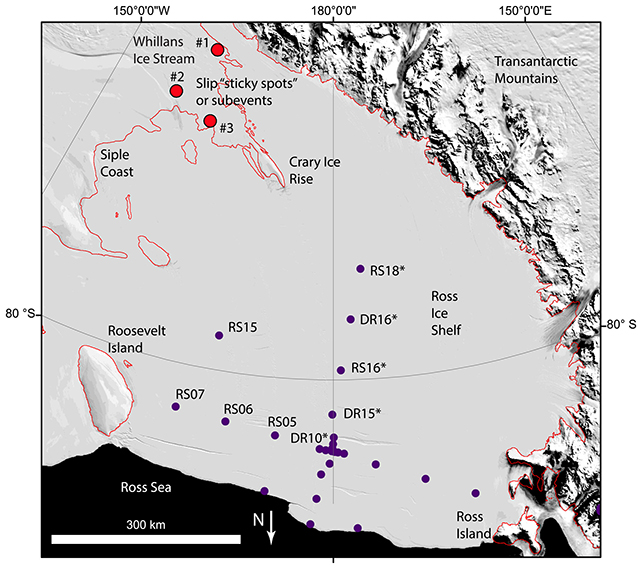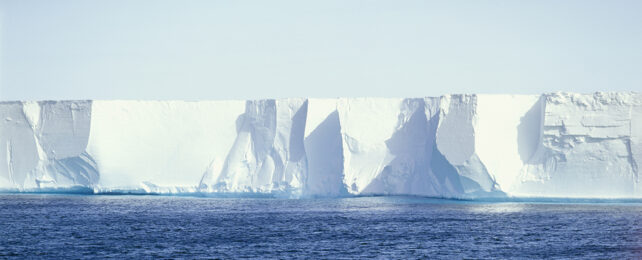Earth's surface typically creeps at a pace we can barely perceive. Tectonic plates inch along at speeds comparable to the growth of fingernails; mountains climb over eons; and glaciers slide at a rate even snails would mock.
Sometimes, nature can surprise us. A new study of the Ross Ice Shelf in Antarctica has uncovered elastic waves that send the entire sheet lurching forward once or twice a day.
Considering this shelf is the largest in Antarctica, about the size of France, we're talking about a significant amount of movement. Knowing how and why it's happening is important in terms of monitoring the South Pole amidst ongoing climate change.
The research team behind the discovery, from multiple institutions across the US, says the movement is being triggered by the Whillans Ice Stream, a rapid-flowing belt of ice in the West Antarctic Ice Sheet that moves faster than its surroundings.
"We found that the whole shelf suddenly moves about 6 to 8 centimeters [2.4 to 3.1 inches] once or twice a day, triggered by a slip on an ice stream that flows into the ice shelf," says geophysicist Doug Wiens, from Washington University in St. Louis.
"These sudden movements could potentially play a role in triggering icequakes and fractures in the ice shelf."
A loss of water underneath the stream may be making it 'stickier', causing the sudden jumps in movement. Instead of flowing at a reasonably constant velocity, a large section of the Whillans Ice Stream stalls, and then suddenly speeds forward.

The study is based on measurements taken by seismographs that were embedded in the ice back in 2014.
Movements of up to 40 centimeters can happen in the ice stream in just a few minutes – each one pushing against the Ross Ice Shelf. These jolts are known as slip events, and they're not unlike the movements along fault lines before earthquakes: pressure is built up as ice moves at different speeds across the stream, and the pressure is then released.
"One would not detect the movement just by feeling it," says Wiens. "The movement occurs over a time period of several minutes, so it is not perceptible without instrumentation."
"That's why the movement has not been detected until now."
While the researchers don't think the ice stream slip events are a direct result of global warming caused by human activity, they are important in terms of the long-term stability of the Ross Ice Shelf. These shelves stretching out across the ocean act as natural borders for glaciers and streams on land, slowing down the melting rate and increasing ice accumulation.
If the Ross Ice Shelf starts to be pushed faster out into the sea and eventually disintegrates, that has consequences for ice cover all across the region. We know that melting glaciers are already contributing to sea level rise, and the research team is going to be watching the Ross Ice Shelf carefully in the coming years.
"At this point, icequakes and fractures are just part of the normal life of the ice shelf," says Wiens.
"There is a worry that the Ross Ice Shelf will someday disintegrate, since other smaller and thinner ice shelves have done so."
The research has been published in Geophysical Research Letters.
